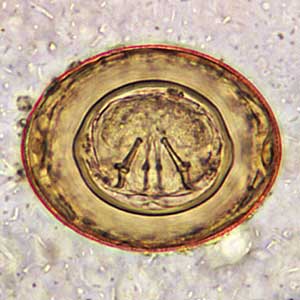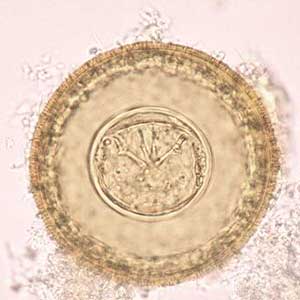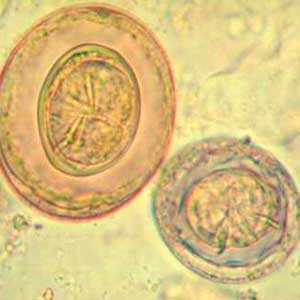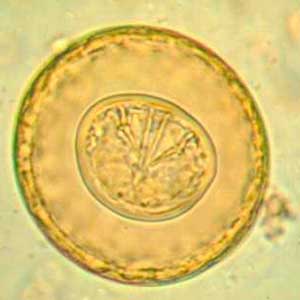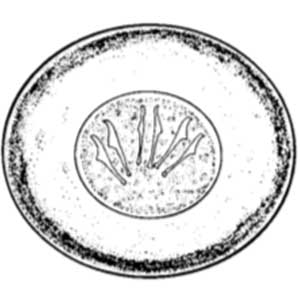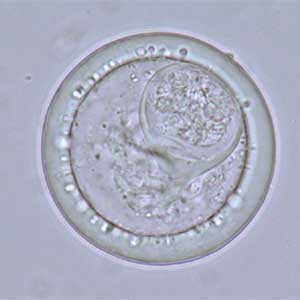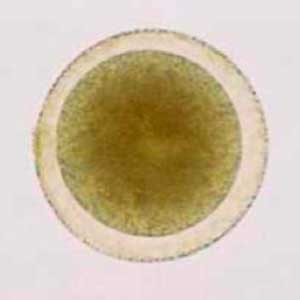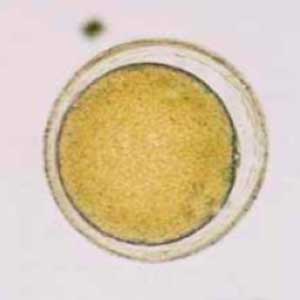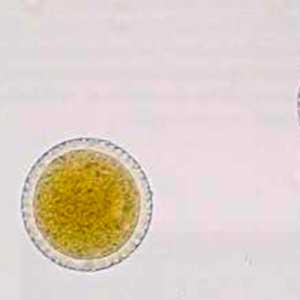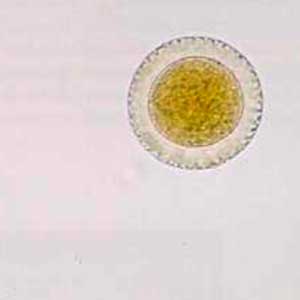Hymenolepis diminuta is a cestode of the small intestine of primates and rodents (namely of rats and mice).
Epidemiology
Hymenolepis diminuta is a cosmopolitan parasite of Old and New World Monkeys, namely macaques (Macaca fascicularis, Macaca mulatta), squirrel monkeys (Saimiri spp.), and owl monkeys (Aotus spp.), and Prosimians. Its prevalence is quite low and is not frequently found in captive non-human primates (Cogswell, 2007; Johnson-Delaney, 2009; Strait et al., 2012; Scricharem et al., 2021).
Description
Hymenolepis diminuta eggs are round to oval and contain a central hexacanth embryo without polar filaments. They measure 70 to 85 µm long and 60 to 80 µm large (Strait et al., 2012).
Differential diagnosis
Differential diagnosis includes other cestode eggs and pollen seeds. However:
- Bertiella eggs are round and smaller (35 to 50 µm in diameter); they also have a pyriform apparatus around their hexacanth embryo (Global Health, Division of Parasitic Diseases and Malaria, 2019a); moreover, Bertiella mainly affects Old World Monkeys and Apes and is less frequent than Hymenolepis in captive non-human primates (Brack, 2002);
- Hymenolepis nana eggs are smaller (30 to 50 µm in diameter); their hexacanth embryo has polar filaments (Global Health, Division of Parasitic Diseases and Malaria, 2017); moreover, nana affects Old and New World Monkeys as well as Apes (Smith, 2009);
- Bay laurel (Laurus nobilis) pollen seeds are round, have a thin outer membrane, a denticulated exine and a homogeneous content. Moreover, they are smaller than Hymenolepis diminuta eggs (50 µm in diameter) and do not contain an hexacanth embryo (Petithory, 1995);
- Saffron (Croccus sativus or Crocus albiflorus) pollen seeds are round, have a thick and smooth outer membrane and a homogeneous content. Furthermore, they are larger than Hymenolepis diminuta eggs (90 to 105 µm in diameter) and do not contain an hexacanth embryo (Petithory, 1995).
Clinical significance
Infections by Hymenolepis diminuta are generally asymptomatic. In rare occasions, clinical signs like diarrhea, abdominal pain and lethargy can appear (Strait et al., 2012).
Prophylaxis and treatment
As Hymenolepis diminuta is zoonotic, hygienic measures need to be taken in case of diagnosis.
Various treatments have been described in non-human primates:
- Niclosamide: 100 mg/kg once (Strait et al., 2012);
- Bunamidine hydrochloride: 25 to 100 mg/kg once (Strait et al., 2012);
- Praziquantel: one injection of 5.68 mg/kg or 1.25 mg/animal PO (Strait et al., 2012).
